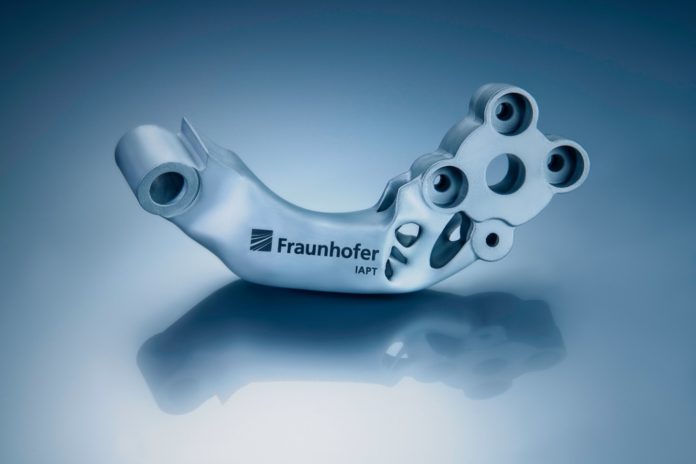As part of its efforts to provide more subsequent solutions for automotive 3D printing, research institute Fraunhofer IAPT reveals interesting results following the redesign of the arm of a door hinge. Designed for a high-profile sports car, the 3D printed door opener demonstrates that the Fraunhofer IAPT team has been able to reduce costs by 50% while saving 35% of the part’s weight.
Engineers at Fraunhofer wanted to highlight the factors that often influence costs in a production. They first used a special software tool developed by 3D Spark – a spin-off of Fraunhofer IAPT – to identify the ideal part.
At a very early stage of the design, the experts then determined the cost-optimal orientation of the component in the 3D printing process. Using the optimized orientation, it was possible, for example, to minimize the number of support structures required while maximizing the number of components that could fit on a build platform. The thus identified component orientation leads to cost savings of 15 percent compared to an additive manufacturing process without such optimization.
In the next step, the structure of the hinge arm was optimized in a targeted manner, using one of the benefits of additive manufacturing in that it enables completely new component geometries. This gave the component a basic shape that only contained material where the simulated force flow required it. In total, this reduced the weight of the door hinge arm by 35%. And because of the reduced material requirements and the shorter print time, the costs compared to 3D printing without structural optimization dropped by another 20%.
Any support structure that does not have to be removed saves time and thus avoids part of the significant costs incurred in the highly manual post-processing phase. Reducing the number of support structures in the design also has a positive effect on production time and material requirements, which cuts costs again by 10%. Skilful selection of the optimum metal powder material from the increasingly broad portfolio of 3D printable materials makes it possible to lower costs by another 10%.
Adjusting the AM process parameters provides additional ways to reduce costs. For example, higher layer thickness during printing, optimization of process parameters, and deformation of the laser beam profile significantly reduce build time. Even though this results in a slight loss of parts quality, (though still superior to that of cast parts), it enables printing costs to be reduced by a further 15%. Optimizing machine utilization by nesting and, if necessary, stacking in the build area, leads to further cost savings of 10%.
Remember, you can post job opportunities in the AM Industry on 3D ADEPT Media free of charge or look for a job via our job board. Make sure to follow us on our social networks and subscribe to our weekly newsletter : Facebook, Twitter, LinkedIn & Instagram ! If you want to be featured in the next issue of our digital magazine or if you hear a story that needs to be heard, make sure you send it to contact@3dadept.com


